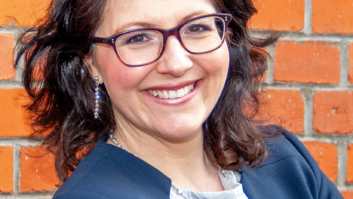
Temple Beth Israel (TBI) synagogue in Melbourne, has replaced its out-dated sound system with OmniLine line arrays from Martin Audio. TBI was founded in 1930 and became the first synagogue in Australia to stream Shabbat services online. Despite this technological achievement, it still relied on an aging sound system that could no longer meet the congregation’s expectations and restricted options for services and events.
Rabbi Gersh Lazarow’s vision for a modern, flexible worship space in combination with the strong musical aspirations of Cantor Michel Laloum led to the appointment of Hanson Associates as the acoustics and AV consulting engineers.
Hanson Associates turned to integrators Urban Intelligence, who fitted an OmniLine micro line array from Martin Audio. The system comprises four 12-element actively processed line arrays, supplied by Technical Audio Group, Martin Audio’s Australian distributors.
Mark Hanson of Hanson Associates, commented: “We nominated OmniLine because computer modelling, conducted by the engineering team using Martin Audio Display software and EASE, proved it could meet the stringent electroacoustic performance requirements. The synagogue was also impressed with OmniLine’s small footprint and minimal visual impact.
“We knew the extended linear frequency response and superior pattern control of the OmniLines across a large listening area, and their ability to minimise acoustic energy ‘spill’ onto reflective surfaces, would guarantee a high level of system stability for a wide range of room formats.”
The Main Synagogue and adjacent Slome Hall at TBI are separated by an operable wall, therefore room format flexibility was an important consideration for the new sound system. During large services and events, the operable wall is retracted and the two pairs of OmniLine arrays are used in a main FOH and delay configuration. “Via the Display software, a second set of FIR filters was exported into an audio DSP preset to generate an entirely different pattern from the same physical array which cuts off sharply at the operable wall at the rear of the room.
“The results were stunning. Despite the live acoustic in Slome Hall, clarity of speech was instantly restored and the system was able to readily support day to day events at the tap of a touchscreen.”
Hanson concluded: “The stability of the electroacoustic system, the success of the microphone and DSP mixer sections, and intuitive tablet user interface for the clergy has meant that complex services and events can be conducted involving multiple speakers and musicians without technical staff and sound engineers, as has been the case previously.”







